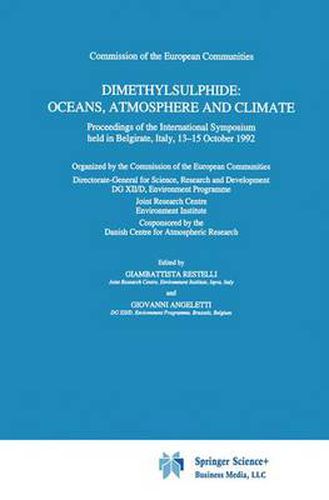Readings Newsletter
Become a Readings Member to make your shopping experience even easier.
Sign in or sign up for free!
You’re not far away from qualifying for FREE standard shipping within Australia
You’ve qualified for FREE standard shipping within Australia
The cart is loading…






This title is printed to order. This book may have been self-published. If so, we cannot guarantee the quality of the content. In the main most books will have gone through the editing process however some may not. We therefore suggest that you be aware of this before ordering this book. If in doubt check either the author or publisher’s details as we are unable to accept any returns unless they are faulty. Please contact us if you have any questions.
Dimethylsulphide (DMS), emitted by marine phytoplankton, is the second most important source of atmospheric sulphur, after anthropogenic SO2. In the atmosphere, DMS is transformed into condensable acidic sulphur products and, through gas-to-particle conversion, it becomes the most important natural source of atmospheric sulphate aerosols. Possible climatic effects have been suggested, linked to the negative radiative forcing due to scattering of solar radiation and especially to modification of cloud albedo over oceans by sulphate aerosol particles. These effects occur in addition to those deriving from the superimposed anthropogenic component of the atmospheric sulphate. Understanding the cycle of DMS in the marine troposphere and its interaction with the aerosol budget and cloud properties has become a key research target in these last years. Our knowledge of the many processes involved is still fragmentary, however. This book, which updates the state of our comprehension of the marine DMS cycle with special regard to its climatic impact, will be of interest to marine biologists, atmospheric chemists, aerosol physicists and climatologists, and to scientists concerned with changes in the Earth’s climate.
$9.00 standard shipping within Australia
FREE standard shipping within Australia for orders over $100.00
Express & International shipping calculated at checkout
This title is printed to order. This book may have been self-published. If so, we cannot guarantee the quality of the content. In the main most books will have gone through the editing process however some may not. We therefore suggest that you be aware of this before ordering this book. If in doubt check either the author or publisher’s details as we are unable to accept any returns unless they are faulty. Please contact us if you have any questions.
Dimethylsulphide (DMS), emitted by marine phytoplankton, is the second most important source of atmospheric sulphur, after anthropogenic SO2. In the atmosphere, DMS is transformed into condensable acidic sulphur products and, through gas-to-particle conversion, it becomes the most important natural source of atmospheric sulphate aerosols. Possible climatic effects have been suggested, linked to the negative radiative forcing due to scattering of solar radiation and especially to modification of cloud albedo over oceans by sulphate aerosol particles. These effects occur in addition to those deriving from the superimposed anthropogenic component of the atmospheric sulphate. Understanding the cycle of DMS in the marine troposphere and its interaction with the aerosol budget and cloud properties has become a key research target in these last years. Our knowledge of the many processes involved is still fragmentary, however. This book, which updates the state of our comprehension of the marine DMS cycle with special regard to its climatic impact, will be of interest to marine biologists, atmospheric chemists, aerosol physicists and climatologists, and to scientists concerned with changes in the Earth’s climate.